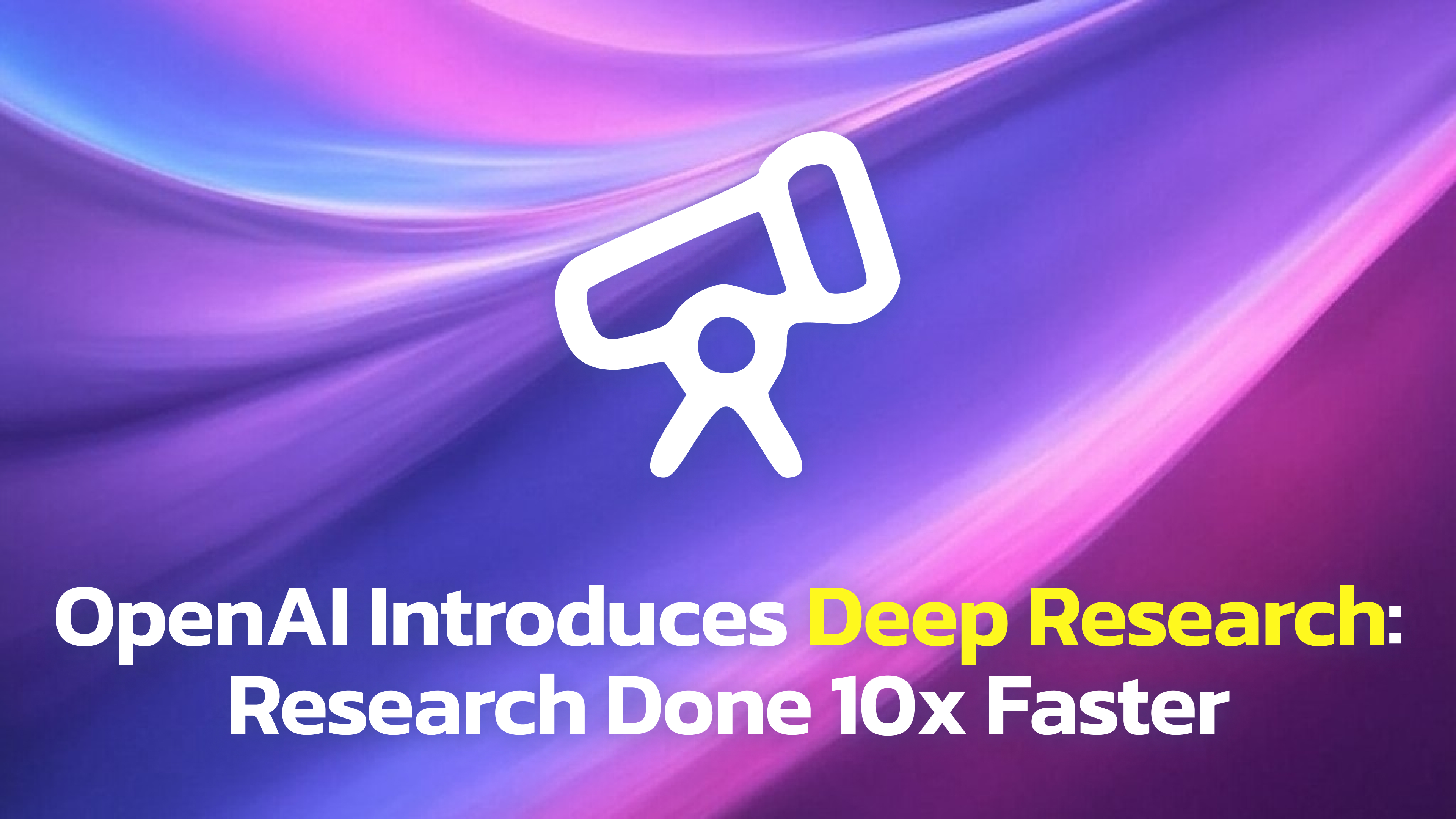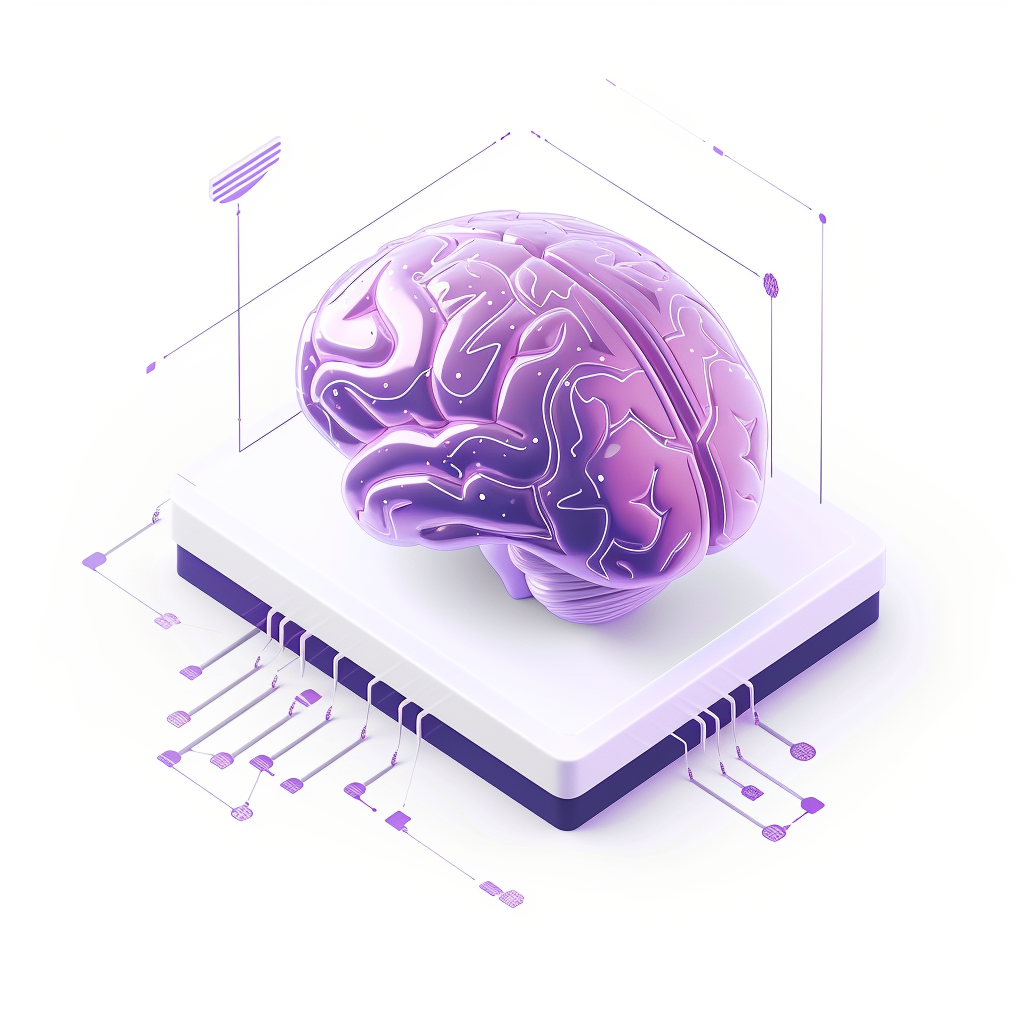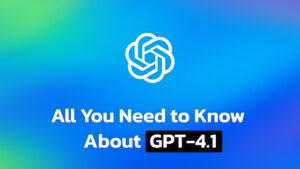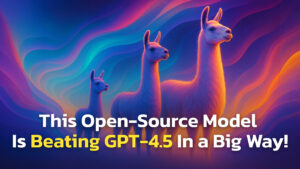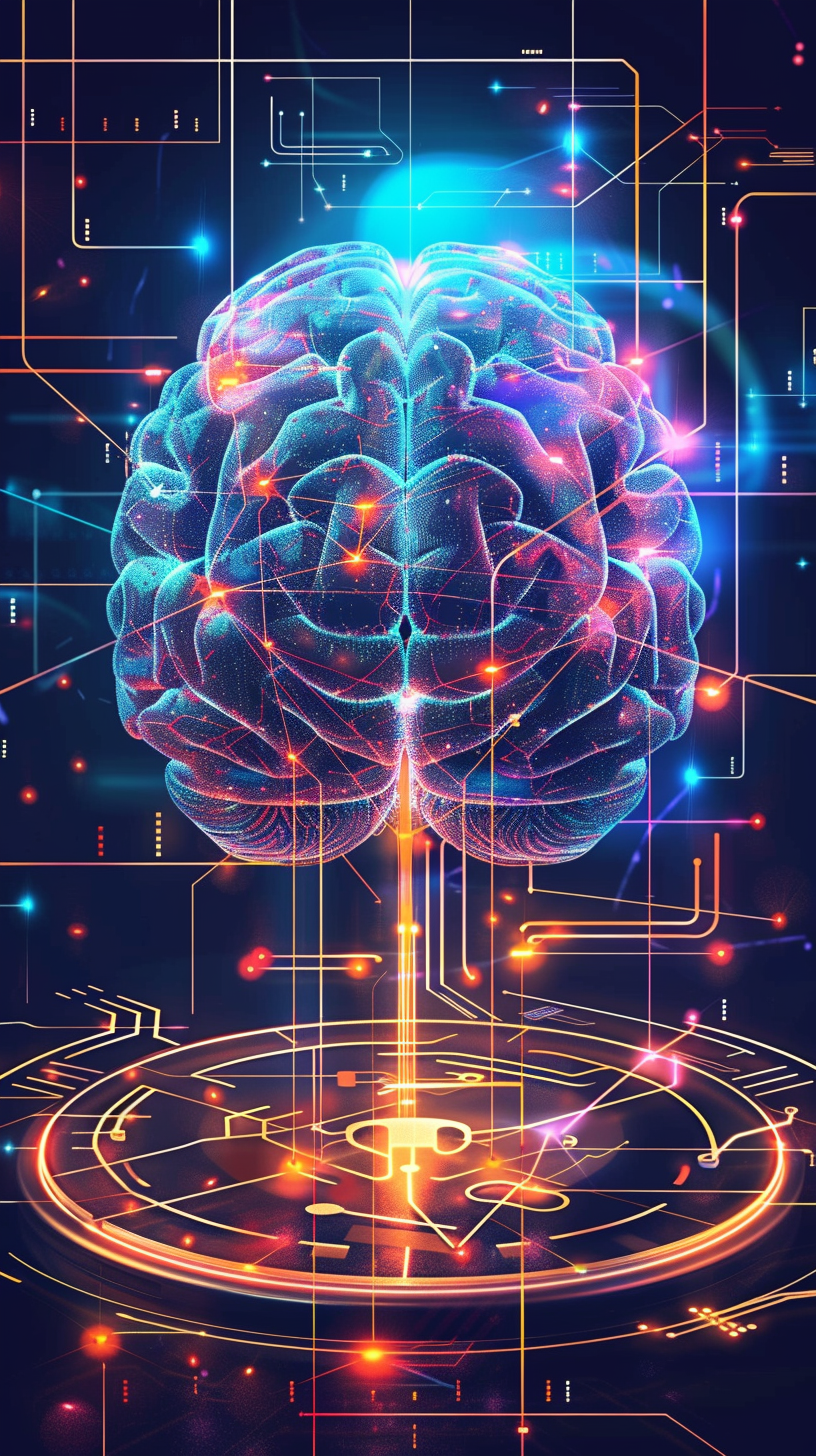On February 2, 2025, OpenAI announced a a new feature for ChatGPT—Deep Research. Built to perform complex, multi-step research tasks, it acts like a personal research analyst, delivering detailed and well-documented reports with clear citations and reasoning steps. This tool aims to reduce hours of manual research to just 5 to 30 minutes by efficiently analyzing data from across the web, PDFs, and even images.
This unveiling comes at a time of fierce competition in the AI landscape. Just last week, Chinese AI company DeepSeek introduced its highly efficient DeepSeek R1 y DeepSeek V3 models. Leveraging a Mixture-of-Experts (MoE)architecture, these models deliver top-tier performance at a fraction of OpenAI’s costs, making AI accessibility a hot topic in tech circles. DeepSeek’s open-source approach has caught the industry’s attention for its ability to dramatically cut GPU usage. If you’re curious about how DeepSeek is shaking up the scene.
In response to these developments, Sam Altman and OpenAI revealed the new o3-mini y o3-mini-high models on January 31, 2025. Designed to boost real-time web search, structured outputs, and function calling, these models cater to tasks like science, math, and coding. This update is aimed at enhancing both speed and cost-efficiency, as OpenAI faces new challenges from competitors like Sky-T1 and Google DeepMind’s Mariner.
What is Deep Research?
Deep Research is a new agent built into ChatGPT that goes beyond simple summaries. Instead of offering brief answers, it plans, analyzes, y synthesizes information from the open web, images, and even PDFs to deliver a comprehensive report. This means that tasks that once took hours of manual investigation can now be done in just 5 to 30 minutes.
It also demonstrated superior reasoning and multi-step analysis on the GAIA benchmark, achieving an average score of 67.36%, setting a new state-of-the-art performance across complex real-world queries. Compared to previous models, it excels at both Level 1 and Level 2 difficulty tasks.
Unlike previous models that might have given you a short reply, Deep Research provides a fully documented output. Each response includes clear citations and a summary of its reasoning process. This transparency allows you to verify the information and understand how the answer was derived.
In early evaluations, the model powering Deep Research achieved 26.6% accuracy on Humanity’s Last Exam, far outperforming other AI models such as GPT-4o, which scored only 3.3%. This benchmark includes over 3,000 expert-level questions from fields like rocket science and ecology.
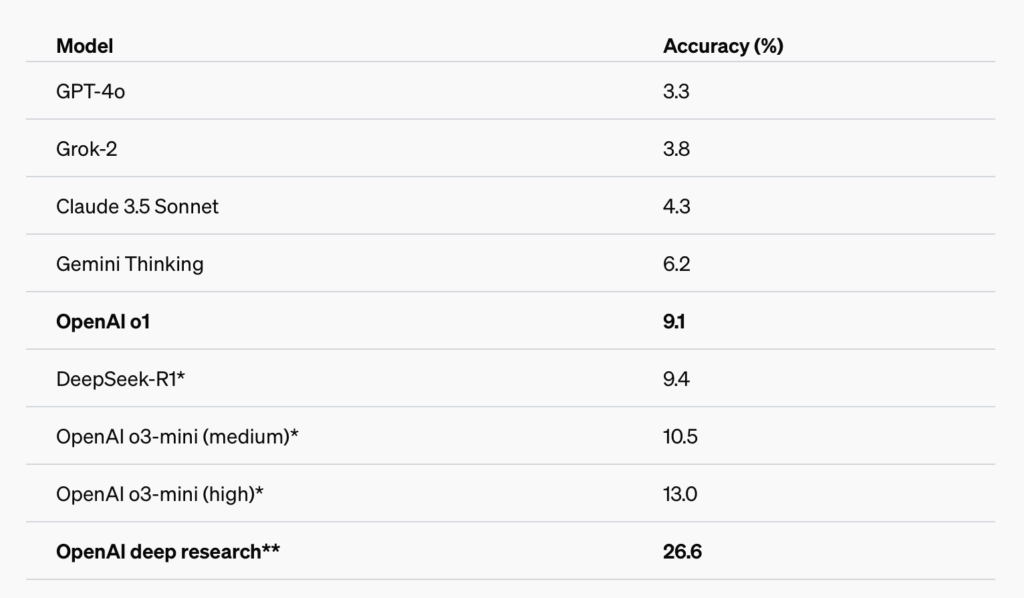
How Does It Work?
Deep Research is powered by a specialized version of OpenAI’s upcoming o3 model, optimized for both web browsing and data analysis. The system uses advanced reinforcement learning techniques, which means it learns from trial and error to improve its multi-step research process. As it navigates the internet for data, it adjusts its strategy in real time, ensuring that even the most complex topics are examined thoroughly.
The tool not only gathers information but also presents it in a way that is easy to follow. For instance, it displays a sidebar summarizing its research process and provides clickable links to sources. This careful documentation is intended to help users who may not be experts in AI understand exactly how the answer was constructed.
Key Features and Capabilities
Deep Research introduces several powerful enhancements that elevate it beyond standard ChatGPT responses.
One of its standout capabilities is in-depth analysis, enabling the AI to gather and synthesize information from a wide range of sources, much like an experienced research analyst. Instead of merely summarizing content, it identifies patterns, evaluates multiple perspectives, and constructs a coherent response tailored to the task at hand.
This in-depth capability is highlighted by its 13.0% accuracy on text-only evaluations using o3-mini-high, surpassing competitors like DeepSeek R1 y Soneto Claude 3.5.
Another key feature is its comprehensive documentation. Each response includes detailed citations and a transparent breakdown of the reasoning process, allowing users to easily verify the accuracy of findings. This approach enhances trust by ensuring that every claim can be traced back to its origin, similar to methods employed by leading analysts.
Finally, versatility sets Deep Research apart. Whether you’re conducting academic research, performing financial analysis, or making decisions such as product comparisons, the tool adapts to a variety of needs. It dynamically adjusts its strategy and presentation depending on the complexity of the query, drawing on its real-time web integration to deliver results in an accessible format.
This innovative approach has already gained attention for its potential to transform how users approach research tasks, making comprehensive, accurate data accessible like never before.es like Ground News for its potential to transform how we gather and understand complex information.
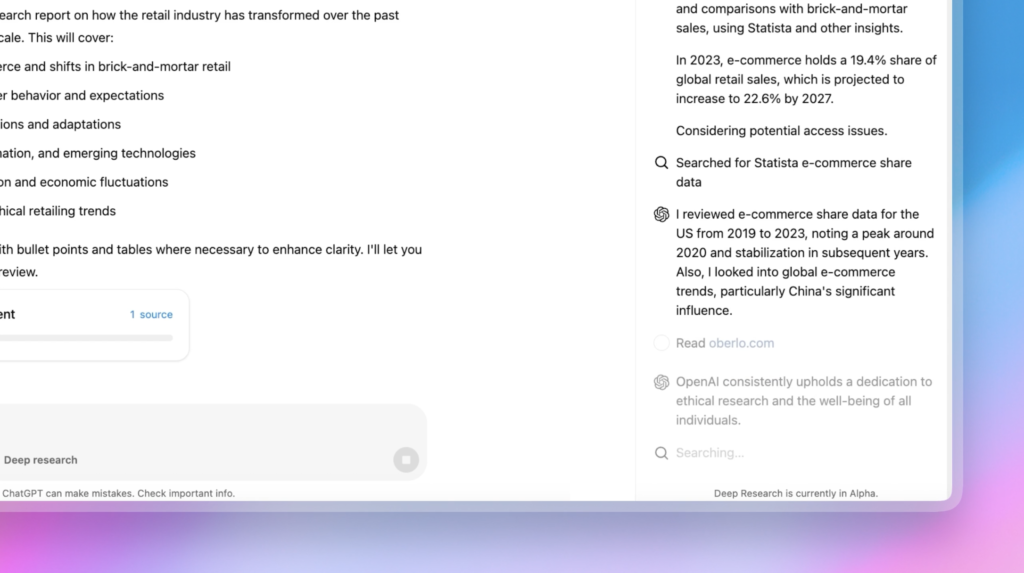
Who Can Benefit from Deep Research?
Deep Research serves a wide range of users by offering detailed, reliable information in a fraction of the time traditionally required. Whether for professional or personal needs, it adapts to various research scenarios with precision and transparency.
Finance Professionals
Deep Research streamlines financial analysis by quickly delivering insights from market trends, earnings reports, and investment data. This accelerates decision-making and eliminates hours of manual research, helping professionals respond effectively to market changes.
It enhances key tasks like portfolio management and risk assessment by synthesizing data from diverse sources. This allows finance experts to make better-informed strategies in fast-moving markets.
Scientists and Engineers
Deep Research compiles technical studies and research data quickly, improving productivity and allowing researchers to focus on innovation. Its transparency ensures findings are verifiable, making it easier to stay updated on field advancements.
By supporting literature reviews and experimental data gathering, the tool reduces research timelines, boosting the development of new technologies and scientific breakthroughs.
Legal and Policy Experts
Legal professionals benefit from Deep Research’s ability to organize case law, statutes, and regulations into concise reports. This helps lawyers and policymakers craft arguments and proposals efficiently with reliable citations.
It also aids in tracking regulatory changes, ensuring compliance and enabling legal teams to stay informed in evolving legal environments.
Everyday Consumers
Consumers gain access to clear comparisons of products, pricing, and expert reviews through Deep Research. This simplifies decision-making for purchases like insurance plans and expensive electronics.
By presenting easy-to-understand, evidence-based information, the tool empowers users to confidently evaluate options and choose what best meets their needs.
Students and Educators
Students can save time on academic research by using Deep Research to gather sources, summarize points, and ensure proper citations. This improves the quality of essays and projects while enhancing critical thinking.
Educators benefit from quick access to up-to-date research and materials, allowing them to prepare effective lessons and content with minimal effort.
Fighting Misinformation
Deep Research counters misinformation by providing transparent, citation-backed answers. This allows users to verify claims and trust the information presented.
Its role in supporting fact-checkers, journalists, and advocacy groups helps promote reliable knowledge in a world increasingly plagued by misinformation.
Limitations and Future Directions
While Deep Research represents a major leap forward, it is not without its challenges. As with any complex AI system, there can be occasional inaccuracies or “hallucinations.” OpenAI acknowledges that, although these errors occur less frequently than with previous models, users should still review and verify the information provided.
However, OpenAI is working on further refinements to maintain accuracy on both benchmark tests and real-world tasks, where models like Deep Research currently outperform rivals by a large margin. Future updates will likely build on the success demonstrated in GAIA’s pass@1 evaluations.
Moreover, because Deep Research is a compute‐intensive tool, it currently has usage limits—available only to ChatGPT Pro users at $200 per month with up to 100 queries monthly. However, OpenAI plans to extend access to Plus, Team, and Enterprise users in the near future. They also intend to add visual elements like charts and images, as well as connections to subscription-based or internal data sources, enhancing its overall capabilities. The SCMP article provides additional insight into how these improvements might shape future updates.
Conclusión
Deep Research marks an important step in making complex, time-consuming research accessible to everyone. Whether you’re a professional needing reliable, in-depth data or just someone who wants to make an informed decision, this tool promises to deliver clear, well-cited, and comprehensive answers—all explained in plain English.
With its advanced web browsing, data analysis, and transparent documentation, Deep Research could become an invaluable resource for anyone who values precision and detail in their research. As OpenAI continues to refine the tool and expand its access, it will likely play a major role in how we gather and verify information in the future. To read more about this exciting development, visit the official announcement.

